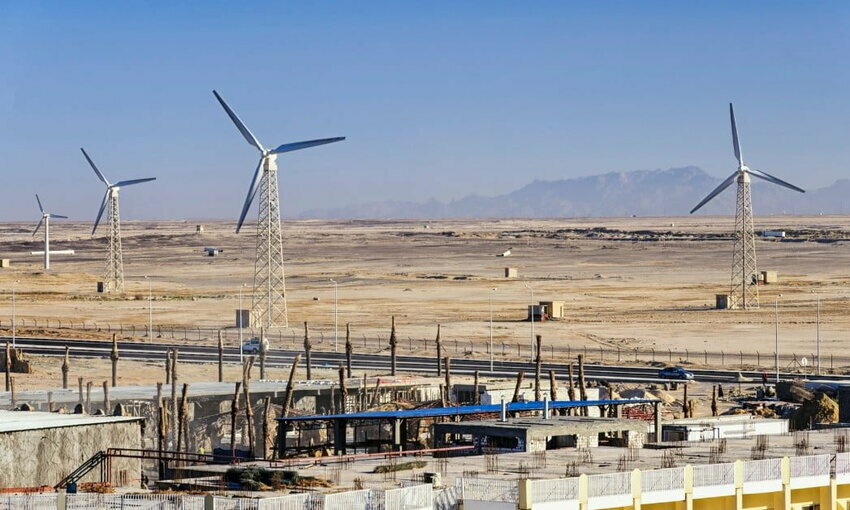 (Credit: Canva)
(Credit: Canva)About 1 billion people worldwide lack access to electricity. Most of those are in Sub-Saharan Africa, necessitating partnerships to expand access to affordable electricity. Welcome the International Renewable Energy Agency’s agreement with the African Union Development Agency.
The joint effort aims to accelerate investments in cross-border transmission infrastructure, which can carry green electrons across the continent.
"Acknowledging that 80% of the global population without access to electricity resides in Sub-Saharan Africa, it is evident that the existing energy infrastructure cannot adequately meet the continent's needs,” said IRENA Director-General Francesco La Camera. "The creation of a more equitable energy system—one that leverages a diverse mix of Africa’s abundant renewable resources—is dependent upon a more interconnected, flexible, and reliable power grid in the region. This partnership serves as a pivotal step towards achieving that objective.”
To that end, the renewable energy agency — IRENA — pushes hard for more renewables, saying the climate crisis requires urgency. It reports that 86% — 187 gigawatts — of all newly commissioned renewable energy capacity in 2022 had lower costs than fossil-fueled electricity. Altogether, new capacity added since 2000 reduced the electricity sector fuel bill in 2022 by at least $520 billion.
Electricity is the lifeblood of any economy. IRENA says that Gross Domestic Product per capita is generally three to five times greater in North Africa where less than 2% of the population is without reliable power. The problem is far more acute in sub-Saharan Africa and will require billions in new investment.
Africa could grow from 1.1 billion people today to 2 billion by 2050, with a total economic output of $15 trillion — money that will now, in part, be targeted to the transport and energy venues.
According to the World Bank, developers have installed more than 700,000 solar systems in the region. IRENA adds that renewable energy, generally, can supply 22% of the African continent’s electricity by 2030. That is up from 5% in 2013. The ultimate goal is to hit 50%: hydropower and wind energy could reach 100,000 megawatts each, while solar power could hit 90,000 megawatts. However, an investment of $70 billion a year is necessary to get there. That’s $45 billion for generation capacity and $25 billion annually for transmission.
One of the critical hurdles holding Africa back is investment in infrastructure, which, if it comes, will give a shot of adrenalin to the continent. Global businesses see potential, having already invested tens of billions: General Electric, ABB, Alstom, Siemens, and Schneider Electric are among the risk-takers.
“Developments in hydrogen-based power generation mean that GE’s gas turbines offer great potential to operate at lower carbon intensity,” said Joseph Anis, chief executive of General Electric Gas Power Europe, Middle East, and Africa.“That helps to firm the grid as more variable renewable resources come online and shows that gas turbines can represent a destination technology, not just a bridging technology, as we transition toward a more sustainable energy future.”
In the immediate term, the need for roads makes building new grids hard. The most efficient method of production and delivery is thus distributed solar power. Solar technologies, meanwhile, have fallen in price by 89% since 2010, while the capital markets have developed a strong appetite for such ventures.
Lower cost also means more access to financing. At the onset of the solar revolution, the traditional capital markets didn’t understand those risks, and the niche financial markets were left to handle them. Today, by contrast, every major bank on Wall Street is making such loans.
“The current business-as-usual trajectory falls significantly short of achieving universal electricity access by 2040,” said Nardos Bekele-Thomas, chief executive of the African Union Development Agency. That necessitates increasing the continent's installed capacity from 266GW to approximately 1,218GW.
“To realize this ambitious target, an estimated $1.29 trillion in cumulative investments will be essential, potentially culminating in the establishment of a robust continental electricity market valued at $136 billion by 2040,” she added. “It is imperative to take urgent and strategic actions to accomplish these transformative goals.”
According to IRENA, rooftop solar costs have fallen 89% since 2010, while utility-scale concentrated solar power has dropped by 69%. It added that onshore wind has declined by 69%, and offshore wind power has sunk by 59% since 2010.